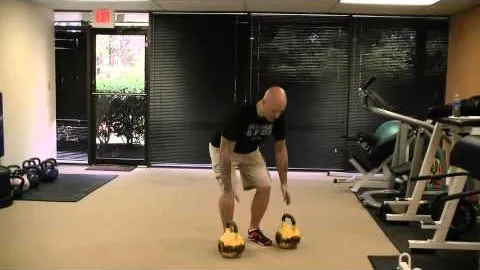
The Kettlebell Squat Thrust is an incredibly effective exercise that combines elements of both strength training and cardio. This compound movement engages multiple muscle groups, providing a full-body workout while improving strength, endurance, and cardiovascular health. In this comprehensive guide, we will explore the benefits of the Kettlebell Squat Thrust and outline step-by-step instructions on how to perform it correctly.
The Kettlebell Squat Thrust targets various major muscle groups such as the quadriceps, hamstrings, glutes, deltoids, and core muscles. By incorporating this exercise into your routine, you can achieve significant improvements in overall strength and muscle tone.
As a compound exercise, the Kettlebell Squat Thrust requires integration and coordination of multiple muscle groups, resulting in increased overall strength and power. The combination of the squat and thrust movements engages the lower body, upper body, and core simultaneously, challenging your muscles to work together and develop functional strength.
The Kettlebell Squat Thrust is a high-intensity exercise that elevates your heart rate, promoting cardiovascular fitness and endurance. By consistently incorporating this exercise into your routine, you can enhance your body's ability to sustain physical activity for longer periods, leading to improved overall stamina and conditioning.
Follow these step-by-step instructions to ensure proper form and maximize the benefits of the Kettlebell Squat Thrust:
To get the most out of your Kettlebell Squat Thrusts and reduce the risk of injury, keep the following tips in mind:
To fully reap the benefits of the Kettlebell Squat Thrust, consider incorporating it into your existing workout routine. Here are some suggested ways to include this exercise in your training program:
Perform a set of Kettlebell Squat Thrusts as a standalone workout, aiming for 3-4 sets of 10-15 repetitions. Rest for 30-60 seconds between each set to allow for recovery.
Pair the Kettlebell Squat Thrust with another exercise, such as kettlebell swings or push-ups, to create a superset. Perform 3-4 sets of 8-12 repetitions for each exercise, alternating between them with minimal rest.
Incorporate the Kettlebell Squat Thrust into a circuit training routine, combining it with other exercises targeting different muscle groups. Perform each exercise for 30-60 seconds, resting for 10-15 seconds before moving on to the next exercise. Complete 3-5 circuits with minimal rest between them.
The Kettlebell Squat Thrust is a versatile exercise that offers numerous benefits for strength, conditioning, and overall fitness. By incorporating this compound movement into your routine, you can achieve a full-body workout, improve strength and power, and develop better endurance. Remember to maintain proper form and gradually increase the intensity as your fitness level improves. With consistency and dedication, the Kettlebell Squat Thrust can become a valuable addition to your fitness arsenal.
If you're looking for a gym, fitness club or yoga studio, you've come to the right place.
You can find information about gyms in your area. Browse catalog of gyms and find gyms with classes which are you looking for.
On gym page you can find simple information like address, phone or website. You can find list of available classes. You can check availability of personal training or small group classes. On place page you can also see information about open hours.
You can find gyms near you with amenities, courts, studios and equipments.
Use our map to find gym at your city or district.
In Gym Navigator you can find list of exercises with movies for many body parts.
You can browse exercises catalog and find exercises the best of you.
You can also find exercises grouped into workout plans, which you can use to improve you body. Each routine show you exercises one by one and give you possibility to count you progress and count down rest time.